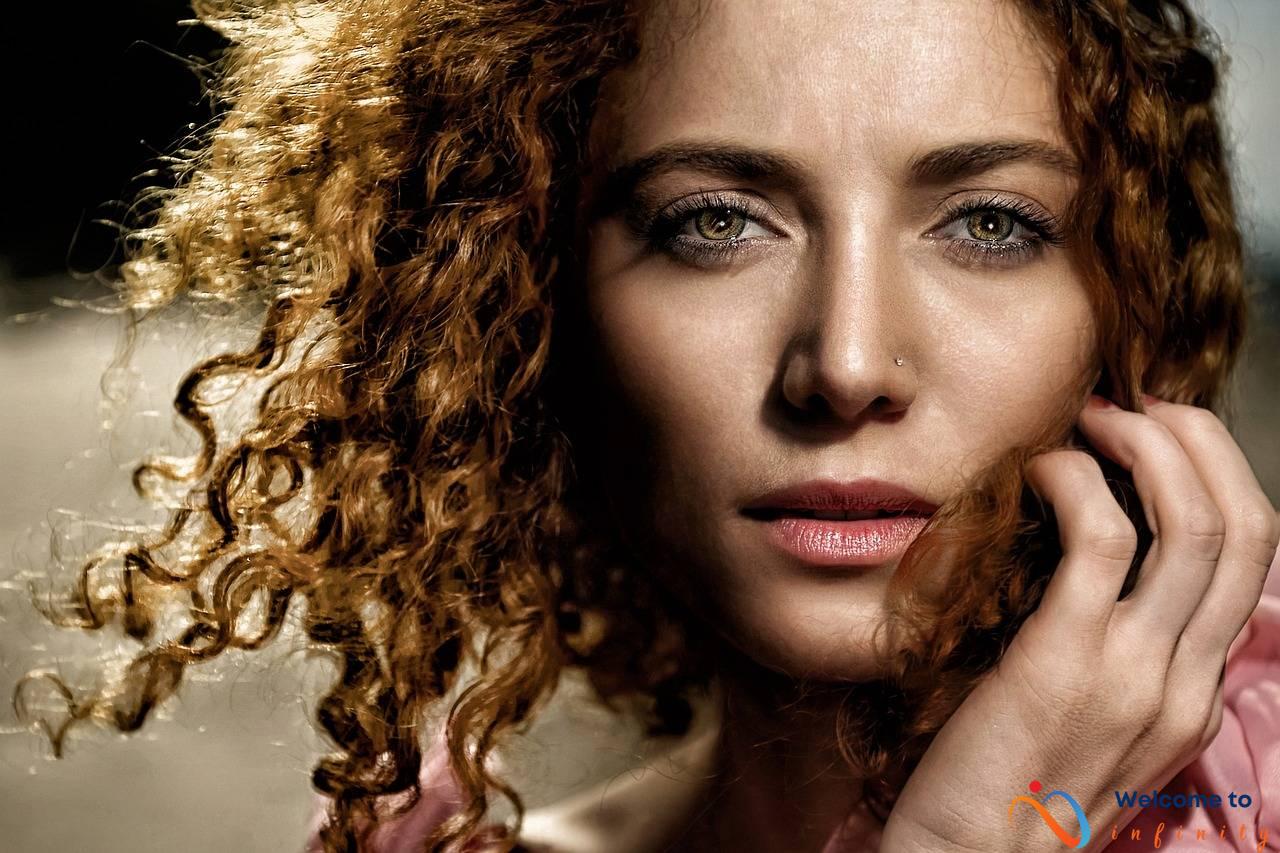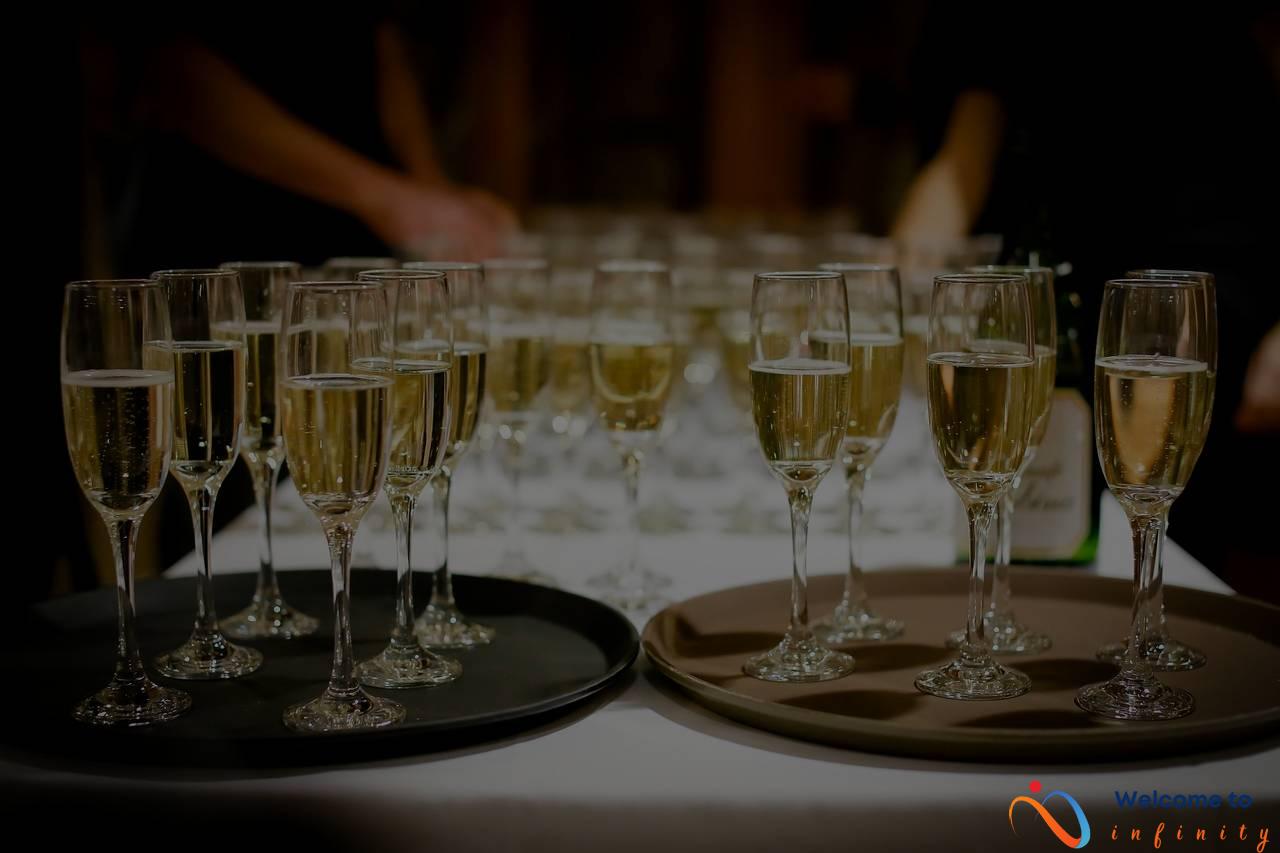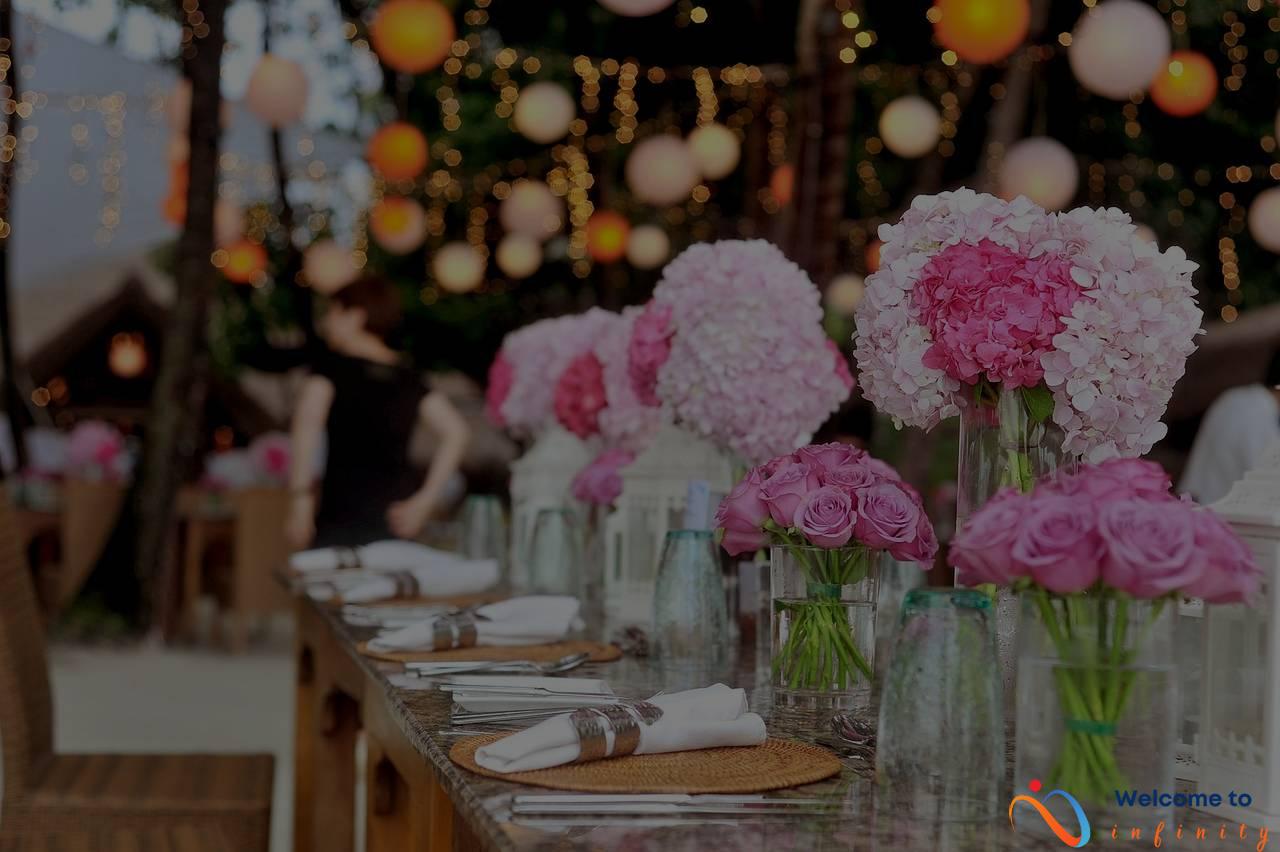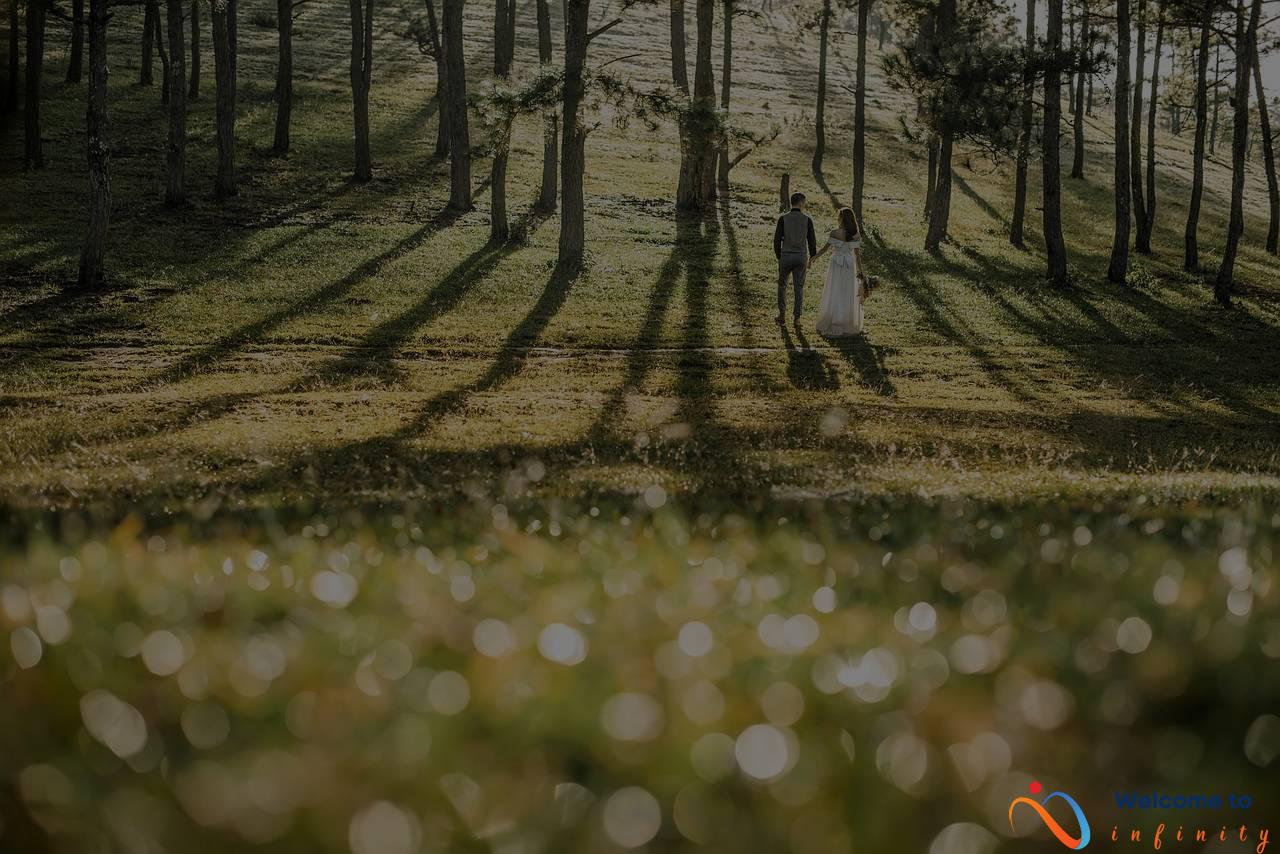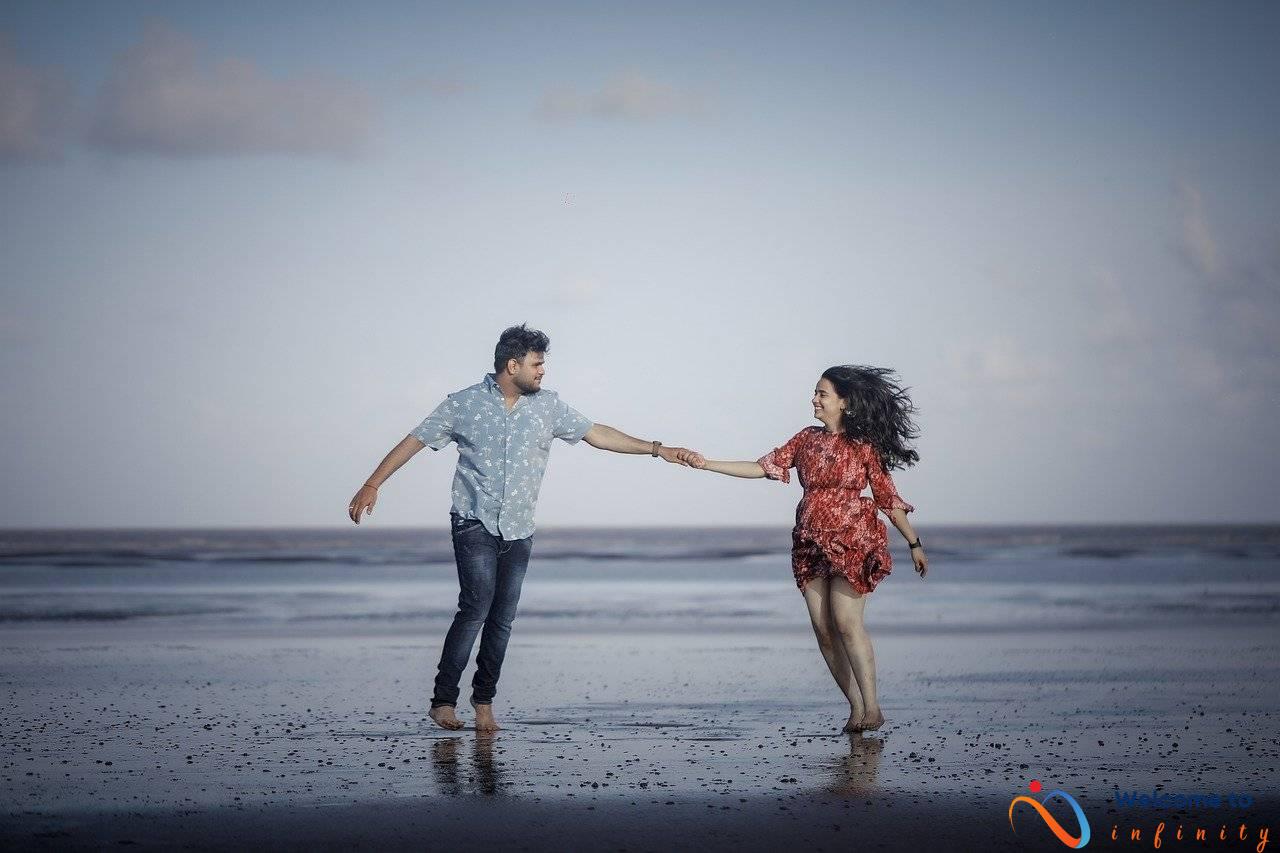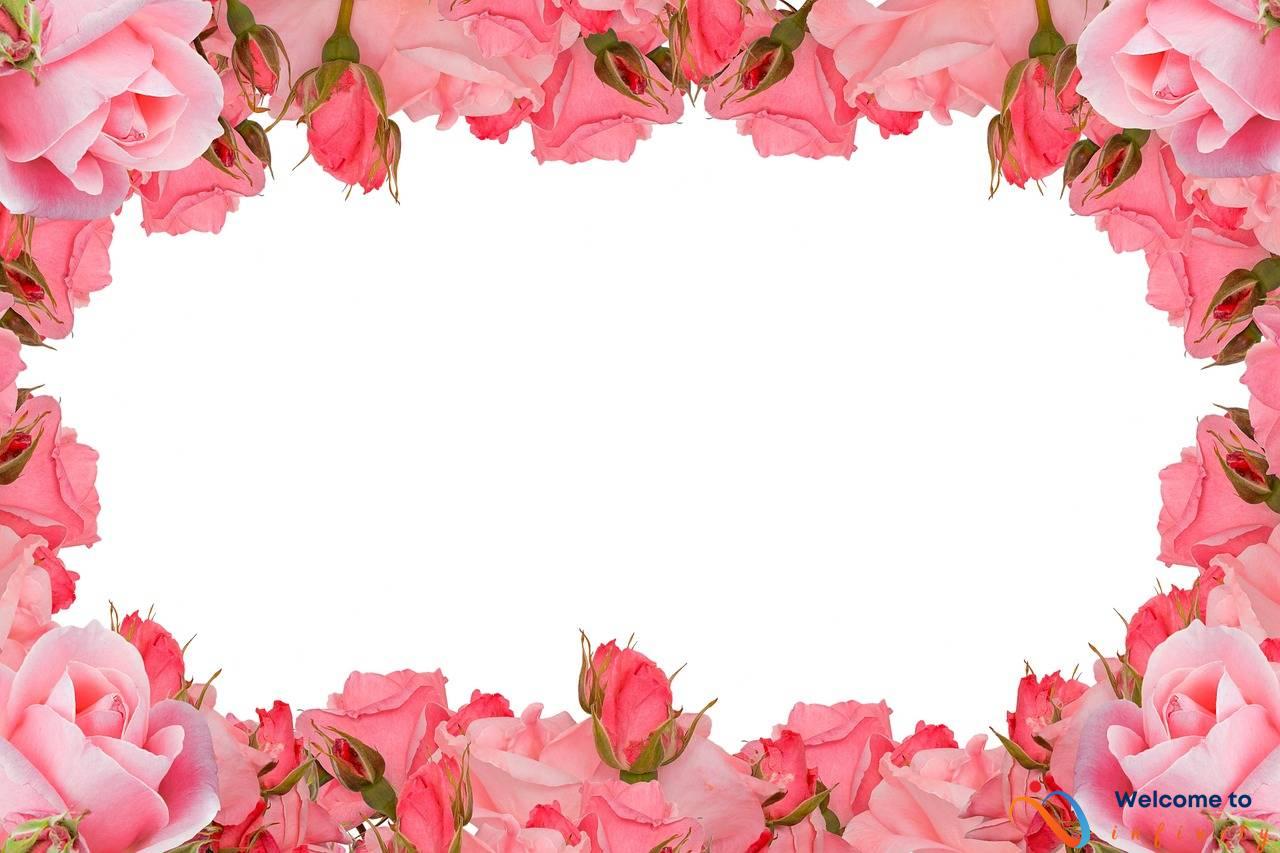A wedding is a joyous occasion where two people come together to commemorate their love and commitment to each other. However, what one might not know is that wedding traditions vary greatly depending on the culture and region. This article will take you on a journey around the world to explore the unique and rich customs of wedding ceremonies.
In India, a Hindu wedding is a grand affair comprised of many pre-wedding ceremonies, rituals, and post-wedding celebrations. One of the most essential ceremonies is the Saptapadi, where the couple takes seven vows of marriage around the sacrificial fire while reciting mantras.
The Chinese wedding ceremony is a blend of cultural and superstitions rituals. The color red is significant as it symbolizes love, prosperity, and happiness. During the tea ceremony, the bride and groom serve tea to their parents as a sign of respect and gratitude. The lion dance is a performance typically carried out at the banquet to bring good luck and ward off evil spirits.
A Mexican wedding is full of vibrant colors, music, and traditions. The exchange of las arras, thirteen gold coins, represents the groom's promise to support his bride. In the Vibora de la Mar, the couple stands on chairs while guests hold out a blanket, and the couple dances on the blanket without falling off.
Scottish weddings are full of culture and history. The handfasting ceremony is an ancient Scottish ritual where the couple's hands are tied together with a cord or ribbon as a symbol of their union. The ceilidh dance is a group dance that brings everyone together in a fun-filled celebration.
In a Muslim wedding, the Nikah is the most significant ceremony where the couple signs the Islamic marriage contract. The bride and groom exchange Mahr, a gift given by the groom to his bride as a symbol of his love and commitment.
Lastly, American weddings have a mix of traditions from different cultures and often create their customs. Something old, new, borrowed, and blue is a popular tradition in American weddings, symbolizing continuity, optimism, and love, respectively. The wedding cake is a highlight of American weddings and has evolved over the centuries, from simple cakes to extravagant multi-tiered designs.
In conclusion, weddings around the world are unique and diverse, each with its traditions and customs that hold a deep meaning. By learning about various cultural wedding ceremonies, we can broaden our horizons and appreciate the beauty of different cultures and their traditions.
Indian Weddings
Indian weddings are known for their elaborate and colorful ceremonies that span several days. A Hindu wedding ceremony has multiple rituals that symbolize the union of the bride and groom and the blessings of the Gods.
The first ceremony is the engagement, where the families exchange gifts and the couple gets formally engaged. Next is the Haldi ceremony, where turmeric paste is applied to the bride and groom's skin as a symbol of purification. The Mehendi ceremony follows, where henna is applied to the bride's hands and feet in intricate designs.
The main wedding ceremony is known as the “Vivaha”, where the bride and groom exchange vows and take seven steps around a sacred fire. This is followed by the “Sindoor” ceremony, where the groom applies sindoor (vermilion powder) on the bride's forehead, symbolizing their marital status. The wedding ends with the “Vidaai” ceremony, where the bride says goodbye to her family and leaves with her husband.
Indian weddings are also known for their sumptuous food and lively music. The sangeet ceremony is a musical evening where both families come together and perform traditional dances. Lastly, the reception is where the newlyweds greet their guests and share a meal.
- Mandap: A canopy decorated with flowers and draped with fabric where the wedding ceremony takes place.
- Groom's attire: A sherwani, a long coat with embroidery or embellishments worn over trousers.
- Bridal attire: A saree or lehenga, both usually embellished with intricate details and embroidery.
Overall, an Indian wedding ceremony is a vibrant and joyous celebration of love, family, and culture.
Chinese Weddings
Chinese weddings are steeped in tradition and superstition, with many customs passed down through generations. One of the most significant elements of a Chinese wedding is the color red, symbolizing luck, happiness, and love. Red is present in almost every aspect of the ceremony, from the bride's dress to the decorations.
another unique custom of Chinese weddings is the tea ceremony, where the couple serves tea to their parents and elders as a sign of respect and gratitude. This ceremony symbolizes the joining of two families and the couple's commitment to each other.
During the wedding banquet, a lion dance is often performed to bring good luck and to ward off evil spirits. The lion is believed to bring happiness and prosperity, and the dance is accompanied by the loud beating of drums and cymbals.
| Symbolism of Red in Chinese Weddings | Customs of a Chinese Wedding |
|---|---|
| Symbolizes luck, happiness, and love | Tea ceremony |
| Represents the bride's purity and virginity | Lion dance |
| Brings good fortune and wards off evil spirits | Exchange of red envelopes (hongbao) |
Another popular custom is the exchange of red envelopes (hongbao) filled with money to wish the couple good fortune and prosperity in their new life together. The number of coins or bills should always be an even number, as a single number is associated with funerals and bad luck.
Chinese weddings are steeped in symbolism and tradition, each element carefully chosen to bring luck, happiness, and prosperity to the couple and their families. From the color red to the lion dance, each custom carries deep meaning and adds to the rich culture of Chinese weddings.
Tea Ceremony
The tea ceremony is an integral part of a Chinese wedding, symbolizing the union of the newlyweds and the joining of their families. During the ceremony, the couple serves tea to their parents and other elders as a sign of respect and gratitude.
The tea used is typically a special blend of tea leaves that represent purity, consistency, and stability, important values for a successful marriage. The tea cups are often adorned with double happiness characters, a symbol of good luck and fortune.
Before the tea is served, the bride and groom first kneel in front of their parents and offer them tea. The parents then offer their blessings and advice for a happy and prosperous marriage. The couple then serves tea to their grandparents, aunts, uncles, and other elders in order of seniority.
The tea ceremony is also an opportunity for the couple to receive gifts of jewelry, money, and other blessings from their elders. These gifts are typically presented in red envelopes, which symbolize good fortune and abundance.
Overall, the tea ceremony is a beautiful and meaningful tradition that highlights the importance of family and unity in Chinese culture. It adds a special touch to the wedding celebration and creates unforgettable memories for everyone involved.
Lion Dance
The lion dance is a traditional Chinese performance that is often seen at wedding banquets. This lively and colorful dance is believed to bring luck and fortune to the newlyweds.
The dance is performed by two dancers who wear a lion costume and dance to the beat of a drum. The lion is believed to be a symbol of strength, courage, and good luck in Chinese culture.
During the dance, the lion performs playful movements and interacts with the guests by playfully biting on a red envelope containing money. This is believed to bring good luck and fortune to the guests.
After the performance, the lion is usually rewarded with a red envelope containing money or fruits as a gesture of appreciation. The dance is often performed during the wedding banquet to bring joy, happiness, and good fortune to the newlyweds and their guests.
Mexican Weddings
Mexican weddings are known for their vibrant colors, lively music, and festive atmosphere. From the beautiful decorations to the traditional dance performances, every aspect of the celebration is filled with passion and joy. Let's take a closer look at some of the unique customs that make up a Mexican wedding.
One of the most important traditions in a Mexican wedding is the exchange of Las Arras, which is the Spanish word for “earnest money.” During the ceremony, the groom will present the bride with 13 gold coins, which represent his commitment to support his new wife and their future children. The bride will then return the coins, symbolizing that they will share everything equally in their marriage.
Another fun tradition is La Vibora de la Mar, which is a playful game that the bride and groom play at the reception. The couple stands on chairs facing each other while their guests form a human tunnel underneath. They hold onto a long white cloth or rope, which represents the challenges they will face together in their future. The guests will sway the cloth back and forth, and the couple must balance on the chairs while trying to keep their grip on the cloth. It's a fun and lighthearted way to celebrate the newlyweds.
Finally, no Mexican wedding would be complete without a lively and energetic celebration known as the fiesta. The fiesta is a time to let loose, dance the night away, and enjoy delicious food and drinks. Mariachi music, a traditional form of Mexican music, is often played throughout the night to keep the party going.
Overall, Mexican weddings are a beautiful and joyful celebration of love and commitment. From the colorful decorations and stunning attire to the lively music and festive atmosphere, it's an unforgettable experience that truly captures the spirit of Mexico.
Las Arras
Las Arras is a highly symbolic tradition in Mexican weddings that involves the exchange of 13 gold coins. The groom presents the coins to the bride, who then returns them back to the groom as a symbol of mutual trust and commitment.
The number 13 represents Jesus Christ and his 12 apostles, signifying the spiritual bond between the couple and their faith. It is believed that the coins bring wealth and prosperity to the couple's future life together.
The coins are typically presented in a decorative box or pouch during the wedding ceremony. The exchange is often accompanied by prayers and blessings from the officiant, family members, and guests.
Las Arras is a beautiful tradition that reflects the rich cultural heritage of Mexico and the significance of a committed relationship.
La Vibora de la Mar
One of the most fun-filled traditions in Mexican weddings is the playful game called La Vibora de la Mar, which translates to “the sea serpent.” This tradition involves the bride and groom balancing on chairs while their wedding guests create a human chain by holding hands and swaying back and forth to create waves.
The aim of the game is for the newlyweds to remain on their chairs while the guests attempt to knock them off by passing under their raised legs. The game is a true test of strength and balance for the couple and requires complete trust between them.
La Vibora de la Mar is not only a fun-filled game but also has a symbolic meaning. The game represents the couple's ability to weather any storm and overcome any obstacle together. The waves generated by the guests symbolize the challenges that the couple will face in their married life and the need to work together to overcome them.
This playful game is usually played during the reception and is a great way to get everyone involved in the celebration. It is a joyful tradition that brings the bride and groom closer to their family and friends.
In conclusion, La Vibora de la Mar is just one of the many fun and unique traditions that make Mexican weddings so vibrant and lively. It is a celebration of love, unity, and togetherness and serves as a reminder of the importance of standing by your partner through thick and thin.
Scottish Weddings
Scottish weddings are full of tradition and customs that are truly unique. One of the most iconic symbols of a Scottish wedding is the kilt, a knee-length skirt worn by men made of wool and adorned with their clan tartan. The groom, as well as the male members of the wedding party, will all be wearing kilts. In addition to kilts, the bride may also incorporate her own family tartan into the wedding attire.
Another popular tradition is the playing of bagpipes. Bagpipes are often played during the ceremony or when the wedding party is walking in or out of the church or ceremony venue. These iconic instruments are an important part of Scottish culture and are frequently found at Scottish weddings.
One of the most unique customs in a Scottish wedding is handfasting. This ancient Celtic ritual involves the binding together of the couple's hands with a ribbon or cloth, symbolizing their commitment to one another. Another fun tradition is the ceilidh dance. This is a type of Scottish folk dance that brings guests together in a lively and energetic way.
When it comes to the wedding reception, a Scottish tradition is the piping in of the haggis. Haggis is a traditional Scottish dish made with sheep's heart, liver, and lungs, mixed with spices and oatmeal. The dish is usually served with neeps (turnips) and tatties (potatoes). The piper leads the haggis into the reception and recites the famous Robert Burns poem, Address to a Haggis, before the dish is served.
Overall, Scottish weddings are full of rich history and beautiful traditions that make them unforgettable. From kilts to bagpipes and everything in between, the customs and symbols of a Scottish wedding are truly one-of-a-kind.
Handfasting
Handfasting is an ancient Celtic wedding ritual that has gained popularity in recent times. It involves binding the couple's hands together with cords or ribbons, symbolizing their union and commitment to each other. The cords are typically in the colors of the couple's choosing and are often made of natural materials like hemp or silk.
The ceremony begins with the couple standing facing each other and holding hands. The officiant slowly wraps the cords around their hands, weaving them together until they are securely bound. As the cords are wrapped, the officiant recites vows and blessings, culminating in a pronouncement of the couple as married.
Handfasting is a beautiful way to honor a couple's ancestry and connect with their heritage. The ritual has many variations, with some couples choosing to incorporate their own personal touches and beliefs. It is often used in modern weddings as an alternative to traditional vows or as a supplemental ceremony to the main event.
- Some couples choose to use cords that have been passed down from generation to generation, symbolizing the continuity of their family's love and commitment.
- Others incorporate the four elements of nature- earth, air, fire, and water- into the handfasting by tying different colored cords to represent each element.
Handfasting is a timeless and intimate way to celebrate a couple's love and commitment. Whether you are a modern couple looking to infuse your wedding with tradition, or you are simply drawn to the romance and beauty of the ceremony, handfasting is a wonderful choice.
Ceilidh Dance
The Ceilidh Dance is a lively and traditional Scottish dance that is often performed at weddings. It is a great way to bring guests together and create an entertaining atmosphere. The dance is usually led by a caller who explains the steps and encourages everyone to join in.
The dance itself is usually performed by couples in groups of four or more. Couples stand facing each other in a circle and follow the steps of the caller. The music is usually played by a traditional Scottish band with instruments such as the bagpipes, fiddle, and accordion. The music is fast-paced and energetic, which adds to the excitement of the dance.
The Ceilidh Dance is not only a fun way to celebrate Scottish culture, but it is also a great way to get guests involved and keep them entertained. It is a celebration of love and the joy that comes with marriage. If you are planning a Scottish wedding, be sure to include the Ceilidh Dance in your celebration!
Muslim Weddings
Muslim weddings are steeped in both religious and cultural traditions. Before the wedding ceremony, the couple typically signs a marriage contract known as the Nikah. This formal agreement outlines the rights and obligations of the couple, including the Mahr, or gift that the groom gives the bride as a symbol of his commitment. The amount of the Mahr is agreed upon by both families and can vary greatly depending on factors such as financial status and cultural norms.
During the wedding ceremony, there are many rituals and customs that are unique to Muslim weddings. The groom typically arrives first, accompanied by male family members and friends, and is greeted by the bride's family. The bride then makes her entrance, usually accompanied by her family or female friends.
The wedding ceremony itself is performed by an Imam or Islamic scholar and typically includes recitation of Quranic verses, the exchange of vows, and the signing of the Nikah contract. The ceremony ends with a prayer for the couple's happiness and well-being.
After the wedding ceremony, there is often a celebratory feast, known as a Walima, which is hosted by the groom's family. This is a time for the newlyweds and their families to come together and celebrate their union.
Overall, Muslim weddings are a beautiful blend of religious and cultural traditions. While certain customs may vary based on geographic location and cultural background, the fundamental values of love, respect, and commitment remain at the core of these celebrations.
Nikah
In Islamic culture, getting married is not just a union between a man and a woman, but it is a sacred and significant contract. The Nikah is the Islamic marriage contract that is signed before the wedding ceremony. This contract outlines the rights and responsibilities of both the bride and groom, and it serves as a way to formalize the marriage.
The contract is typically signed in the presence of an Imam or a religious leader, and it is a binding agreement between the bride and groom. It is essential that both parties agree to the terms of the contract before signing. The contract includes the terms of the mahr, which is a gift that the groom gives to the bride. This gift symbolizes the husband's commitment to taking care of his wife and providing for her. The mahr can be anything from money to jewelry, and it is agreed upon by the couple before the wedding ceremony.
The Nikah also includes a section that outlines the responsibilities of the husband and wife. The husband is responsible for providing for his family and taking care of his wife and children. The wife has the responsibility of taking care of the home and raising the children. The contract also outlines the process for divorce in case the marriage does not work out.
The Nikah is an essential part of an Islamic wedding, and it serves as a reminder of the commitment and responsibility that comes with marriage. It is a beautiful and meaningful contract that highlights the importance of mutual respect and understanding between the bride and groom.
Mahr
One of the most important aspects of a Muslim wedding ceremony is the exchange of the mahr. The mahr is a gift given by the groom to the bride as a symbol of his commitment to her. It is a mandatory part of the Muslim marriage contract, which is signed before the wedding ceremony.
The mahr can be anything of value, such as money, jewelry, or property. It is up to the bride to decide how she wants to use it, whether it is to keep it as her own or share it with her family. The groom must pay the full mahr amount at the time of the wedding, but may negotiate with the bride on the amount and payment terms before the wedding.
The mahr is not only a symbol of the groom's love and commitment, but also provides financial security for the bride. In the event of a divorce, the mahr is considered her personal property and cannot be taken away by the husband. It also serves as a reminder to the husband of his responsibilities towards his wife and the importance of treating her with respect and care.
The mahr is a beautiful tradition in Muslim wedding ceremonies that highlights the value of love, commitment, and financial security in a marriage. It is a significant part of the Islamic marriage contract and emphasizes the importance of mutual trust and respect between the bride and groom.
American Weddings
American weddings are often a melting pot of different cultural traditions. While many couples will incorporate traditional American customs like the exchanging of rings and the tossing of the bouquet, they may also include customs from their cultural backgrounds or those of their families.
One popular tradition is the incorporation of “something old, something new, something borrowed, and something blue”. This custom comes from an English rhyme that lists the items a bride should wear on her wedding day to bring good luck. The “something old” represents the bride's past and family, the “something new” symbolizes her hope for the future, the “something borrowed” comes from a happily married family member or friend, and the “something blue” symbolizes fidelity and love.
Another essential element of an American wedding is the wedding cake. While wedding cakes have been around since ancient Rome, the tradition of having a multi-tiered wedding cake is an American custom. In the early 20th century, cakes with several tiers became popularized, and by the 1920s, the modern, white wedding cake had become a staple.
In addition to these more well-known traditions, many couples are also incorporating unique elements into their weddings to reflect their personalities and interests. This could be anything from a comic book-themed cake topper to having a first dance to their favorite song regardless of genre.
Overall, American weddings are an exciting and joyful occasion that celebrates not only the union of two people in love but also the blending of various cultures and customs.
Something Old, Something New
One of the most well-known wedding traditions is “something old, something new, something borrowed, something blue.” This saying dates back to Victorian times and is meant to bring the couple good luck.
The “something old” represents continuity with the bride's past, while the “something new” symbolizes hope for the future. The “something borrowed” should come from someone happily married with good fortune, and the “something blue” stands for fidelity and loyalty.
Many brides incorporate these elements into their wedding attire. The “something old” could be a piece of jewelry from a family member or a wedding dress passed down through generations. The “something new” could be the dress itself or a pair of shoes. The “something borrowed” could be a veil or a handkerchief. And the “something blue” could be a piece of ribbon on the bouquet or a blue sash on the dress.
While this tradition originated in England, it is now popular around the world. It is a way to add personal touches to a wedding ensemble while paying tribute to family and friends.
The Wedding Cake
Wedding cakes have been an essential part of Western wedding ceremonies since the Roman Empire. Initially, they were simple loaves of bread that were broken over the bride's head to symbolize fertility and good fortune. During the medieval period, small spiced buns were stacked in a tower to symbolize a fruitful union. And in the 17th century, the French created the tiered cake with white icing that we recognize today.
Nowadays, wedding cakes have taken on a whole new level of extravagance and artistic creativity. They come in all shapes, sizes, and flavors, and are decorated with intricate icing designs, sugar flowers, pearls, and even figurines resembling the bride and groom. Bakers now take inspiration from a couple's interests, wedding theme, and colors to create a cake that is unique to the couple.
Modern technology has allowed for even more creativity and personalization. Couples can have their faces printed on the cake using edible ink or they can have a cake projection mapping show. The cake projection mapping show projects stunning virtual images onto the cake to create dynamic animated displays that captivate and entertain guests.
While the wedding cake is primarily a symbol of the couple's union and sweet start to their new life, it has also morphed into a reflection of the couple's style and personality. From classic white cakes to avant-garde designs, the wedding cake remains an iconic part of a wedding celebration.
- In ancient Rome, cakes were broken over the bride's head to symbolize good fortune and fertility.
- During medieval times, stacked spiced buns symbolized a fruitful union.
- Modern wedding cakes now come in all shapes and sizes and can be decorated with intricate designs, sugar flowers, and even projections.
- Wedding cakes are now more personal, reflecting the couple's style and personality.



